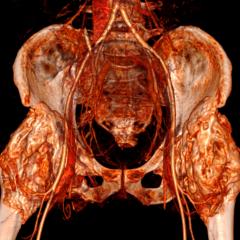An international coalition of medical virologists has penned an open letter to the World Health Organization (WHO), calling for support to promote the proven and effective transmission prevention strategies on the human T cell leukemia virus subtype 1 (HTLV-1).
Dr Fabiola Martin, a sexual health, HIV and HTLV physician and researcher at The University of Queensland is a member of the Global Virus Network (GVN), which is dedicated to identifying, researching, combatting and preventing current and emerging pandemic viruses that pose a critical threat to public health and well-being.
She believes that with support from WHO, the GVN can make an impact.
“As with most sexually transmitted viruses, the majority of HTLV positive people transmit the virus unknowingly and are unaware that they are at risk of developing HTLV-1 associated diseases,” Dr Martin said.
“The statistics speak for themselves and with the support of the World Health Organization, we will be able to support patients and promote effective HTLV-1 prevention strategies internationally.”
The GVN comprises 41 Centers of Excellence and seven affiliates in 26 countries and the open letter was published in The Lancet online on May 12, following the GVN’s 9th International Meeting in Melbourne on 25-27 September, 2017.
Robert C. Gallo, MD the Co-Founder and Director of GVN and Co-Founder and Director, Institute of Human Virology, University of Maryland School of Medicine, a GVN Center of Excellence, said the virus was devastating entire communities.
“Since my colleagues and I discovered HTLV-1, the first known human retrovirus in 1980 and the first virus shown to directly cause human cancer and later shown also to cause neurological and immune disorders, we have learned that this destructive and lethal virus is causing much devastation in communities with high prevalence,” he said.
“The GVN created an HTLV-1 Task Force over three years ago, recognising that there are no effective vaccines against this virus nor antiviral drugs to treat infections. During the GVN meeting last September, I was astounded to learn of the hyper-endemic numbers in the Aboriginal population of Australia.”
“HTLV-1 is endemic in other regions including several islands of the Caribbean, and in countries such as Brazil, Iran, Japan and Peru. We hope that the WHO will agree with us, and begin to take action in promoting prevention strategies against HTLV-1.” Prof. Gallo is also Co-Chair of GVN’s HTLV-1 Task Force.”
HTLV-1 is transmitted via the same routes as HIV, which was co-discovered as the cause of AIDS by Prof. Gallo and his colleagues, along with scientists at Institut Pasteur.
HIV and HTLV-1 transmit via infected body fluids including unprotected sexual intercourse, breastfeeding, sharing of injecting equipment, and the transfusion and transplantation of infected blood and organ donations.
They are ancient viruses originating from non-human primates. HTLV-1 prevalence is more complex than HIV, in that it is highly endemic in some parts of the world, while surveillance data in many regions are not comprehensive and unknown for six billion persons.
In a recent hospital-based cohort study by Lloyd Einsiedel, Executive Director, Baker Heart and Diabetes Institute, Northern Territory, 33.6 per cent of Indigenous people tested HTLV-1 positive, reaching 48.5 % in older men. Further, the following infection rates are reported worldwide:
- Brazil – a prevalence rate of 1.3 per cent in blood donors in certain regions, 1.8 per cent in the general population and 1.05 per cent in pregnant women with 33 per cent of their family members including children found to be positive.
- Central African Republic – 7 per cent of older, female Pygmies in the Southern region infected.
- Gabon – a HTLV-1 prevalence of 5–10 per cent has been observed in adults.
- Iran - up to 3 per cent of adults are infected in the Mashhad area while HTLV-1 is found across the country.
- Jamaica – 6.1 per cent in the general population and other Caribbean islands that have been studied have similar prevalence rates.
- Japan – 1,000,000 are HTLV-1 positive and in Southern regions 10 per cent of adults more than 50 years of age carry this virus.
- Nigeria – 850,000 to 1.7 million infected.
- Romania – infection rates include 5.3/10,000 among first-time blood donors, and 3-25 per cent in poly-transfused patients.
“Specifically for Australia, we have all of the key components required for an effective response to this virus – indigenous clinical leadership; the medical research skills and capacity; and two forthcoming developments in treatment and vaccine development,” Professor Damian Purcell said, Head of Molecular Virology Laboratory, The University of Melbourne at the Doherty Institute.
“But we need the support of the WHO and Australian Government to accelerate research and implement these strategies.”



